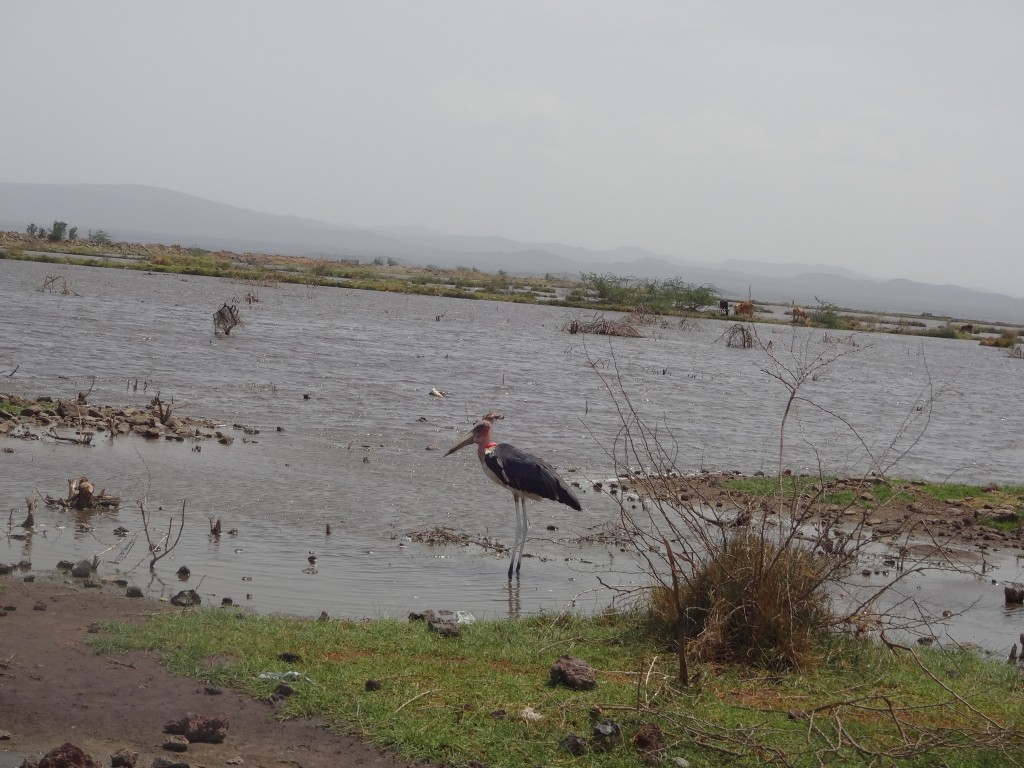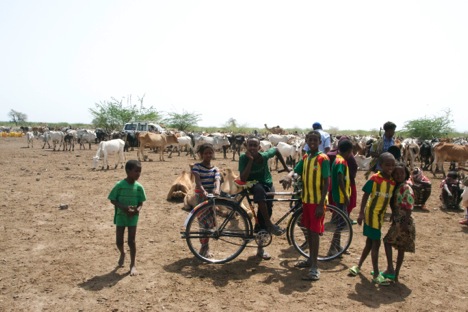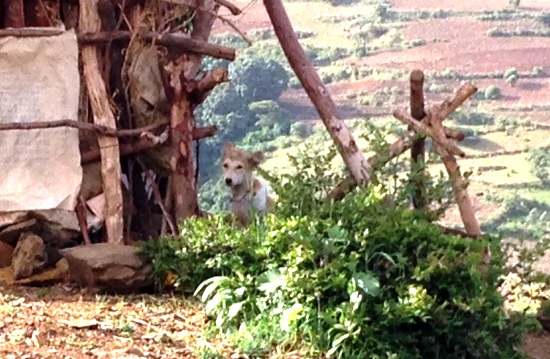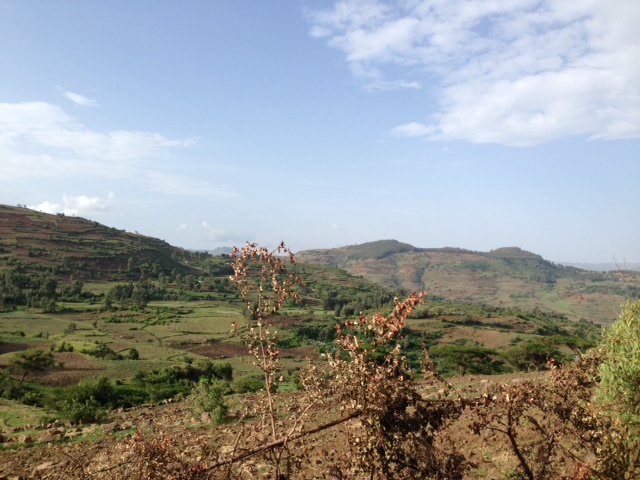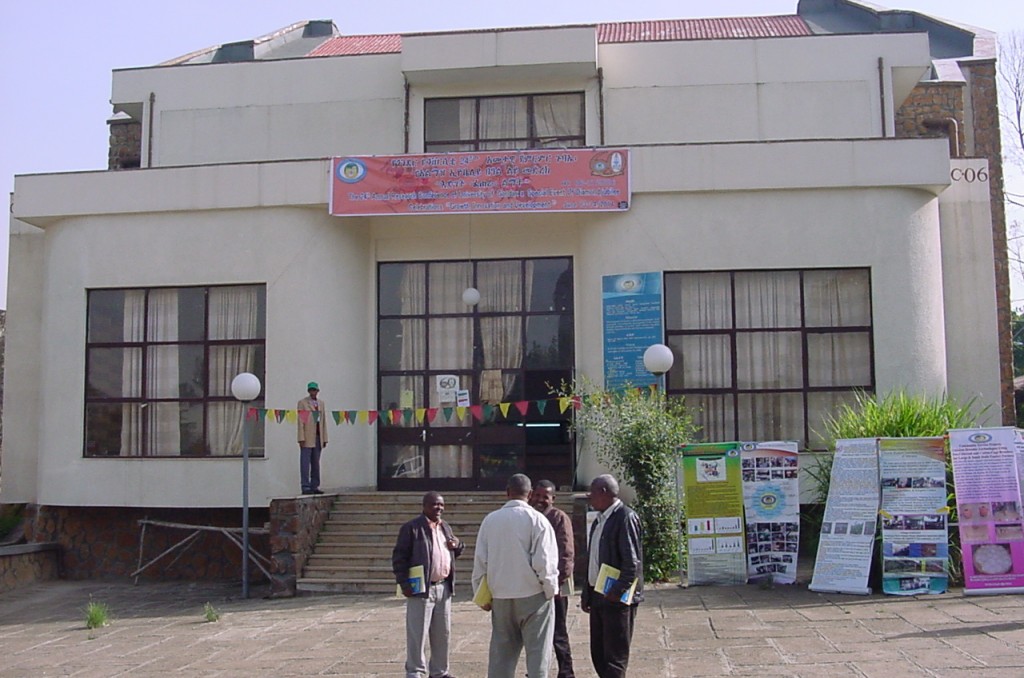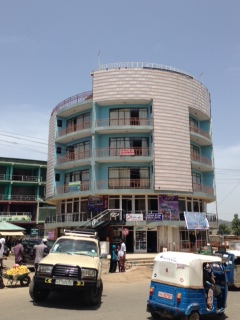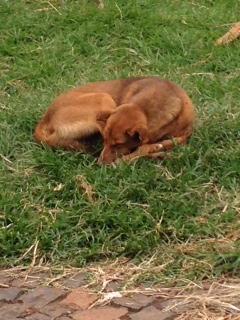By Maria Belu
Ohio State Veterinary Public Health student
Is that water coming in?
It was the first thought that popped into my head when I looked up after taking the heart rate of my recently extubated dog in recovery. It was the last of an amazing six days that I had spent taking part in a sterilization and rabies clinic in Gondar, Ethiopia.
We were there to serve the local community by offering spay/neuter surgeries at no cost to them as well as rabies vaccines. The second (and equally important) aspect of our mission was to educate recent veterinary graduates on how to perform spay/neuter surgeries through ventral approach from sedation to recovery.
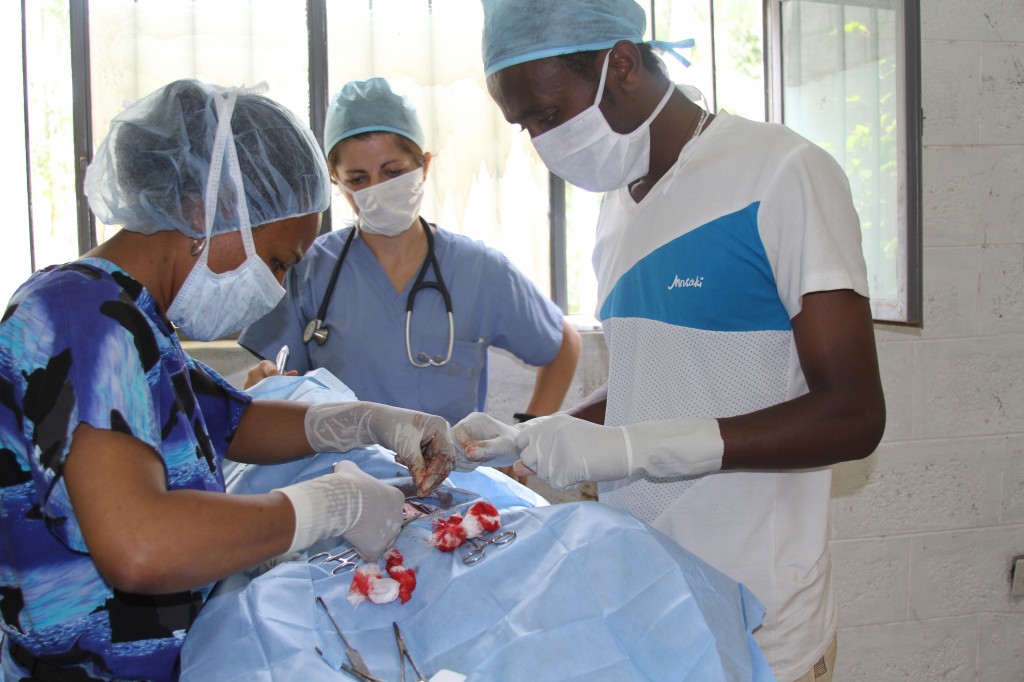
Maria Belu, center
I was overwhelmed every morning by the patience of people who brought their animals to us, waiting from early in the morning to late in the afternoon for when we could fit them in. Often the need of the community overwhelmed us, and at times we had to turn dogs away.
Despite this, I’m so proud of the small effort I played alongside my fellow students: Alexandra Medley, Kelsey Gerbig, Mal Kanwal, and Ally Sterman. It was an amazing clinical experience, being able to take care of a dog from the moment they were intubated and catheterized to when they recovered.
Most of the dogs we worked with were often scared of us; thus, they could be a little more difficult to handle. This observation is what made our last day so unbelievable.
As I said, I was recovering one of the last dogs we spayed that day, and when I looked up, water was coming in through the front door.

The rain for the past 15 minutes had been deafening, but I was used to rain, so we paid it little attention. In a heartbeat’s moment, more and more water kept coming in. People around me began scrambling, taking any supplies that were resting on the ground to place high on tables.
We were laying the dogs on a mat in the corner, and the few of us recovering dogs pulled up that mat to form a kind of comical island. One of the surgeons we worked with, Dr.Terefe, looked outside the window and called out that water was rising quickly.
Our other surgeon and head director of the project, Dr.O’Quin, quickly made the decision to evacuate the surgery suite since we were at the bottom of a hill.
I wrapped up my dog in a surgery gown and lifted her off the ground. She was one of the less aggressive dogs, so I was thankful that I was carrying her.
Alexandra, sadly, was helping recover one of the more aggressive dogs. Miraculously, as if she knew we were helping her, she let Alexandra lift her up and carry her without any fuss. That was the first miracle of the day.
The second miracle was that we had no dogs in surgery as the water rose. If we had to be flooded, it was a pretty good time for it happen.

We picked up our dogs and moved toward the door. Some of the veterinary students helping us opened up the doors. The moment I stepped out, suddenly water was all the way up to my hip.
We walked out unable to see the ground under our feet, with water moving past us at a rapid pace. I gingerly stepped forward. We made it up the steps and joined some of the other university staff.
We placed the dogs on a nearby table and wrapped them up in window curtains that people brought us to keep the animals warm.
As we stood around looking like cats after an unwanted bath, with our patients wrapped in beautiful curtain, we began to laugh. It was not the end I had expected to our amazing week, but it was certainly a fitting one.
 We have satisfaction tinged with sadness today, as our short course came to a close.
We have satisfaction tinged with sadness today, as our short course came to a close.




